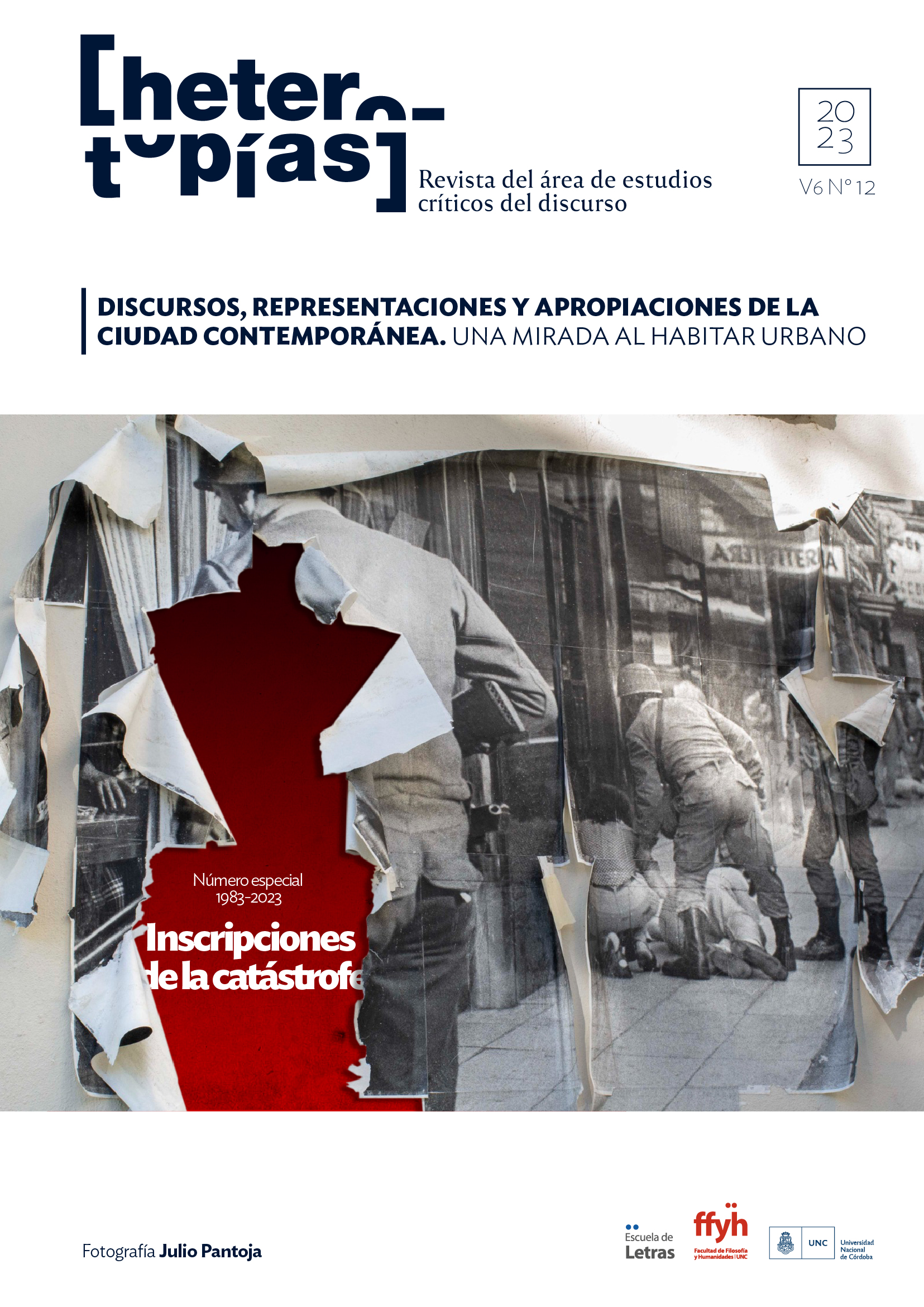Public space as a category-place Reflections on its social, spatial and technological construct
Main Article Content
Abstract
This paper presents a theoretical discussion on the public as category, space and
place from a transdisciplinary and exploratory approach. It is based on the assumption that
the complexity of current issues puts disciplinary categories in crisis, making new epistemic
searches necessary. Public spaces represent a concept whose density allows us to
approach this discussion, where we are particularly interested in problematizing its sense
of category-place from its disciplinary consensuses and conflicts. The work develops a
multimodal methodology of methods: historical-critical, bibliographical analysis and
empirical references.
Downloads
Article Details

This work is licensed under a Creative Commons Attribution-NonCommercial-ShareAlike 4.0 International License.
Those authors who have publications with this journal, accept the following terms: Those authors who have publications with this journal, accept the following terms:
a. The authors will keep their copyright and guarantee to the journal the right of first publication of their work, which will be simultaneously subject to the Creative Commons Attribution - Non-Commercial - Share Alike (by-nc-sa) Attribution License; no commercial use of the original work or any derivative works is allowed, the distribution of which must be done with a license equal to the one that regulates the original work.
b. Authors may adopt other non-exclusive license agreements for the distribution of the published version of the work (e.g., deposit it in an institutional telematic archive or publish it in a monographic volume) provided that the initial publication in this journal is indicated.
c. Authors are allowed and recommended to disseminate their work through the Internet (e.g. in institutional telematic archives or on their website) before and during the submission process, which may lead to interesting exchanges and increase the number of citations of the published work. (See The effect of open access).
How to Cite
References
Arendt, H. (2015). La condición humana. Paidós.
Booth, A. (1984). El ambiente construido, disuasivo del delito: Un replanteamiento del
espacio defendible. En Estudios de psicología. MIT.
Borja, J. (2014). Prólogo. En Domínguez Moreno L. y Sánchez González D. (2014). (ed.)
Identidad y espacio público: Ampliando ámbitos y prácticas. Gedisa.
Borja, J. y Muxí, Z. (2003). Espacio público: ciudad y ciudadanía. Barcelona: Electa.
Crispino, D. (2022). The Hameau de la Reine at Versailles and the reproduction of vernacular architecture. En Proceedings HERITAGE 2022 - International Conference on Vernacular Heritage: Culture, People and Sustainability (pp. 79-85). Editorial Universitat Politècnica de València.
https://doi.org/10.4995/HERITAGE2022.2022.15154
Debord, G. (2018). La sociedad del espectáculo. La marca editora.
Delgado, M. (2005). Espacio público y comunidad. En Comunidad a debate: Reflexiones
sobre el concepto de comunidad en el México contemporáneo (pp. 39-60).
Universidad de Ciencias y Artes de Chiapas.
Delgado, M. (2015). El espacio público como ideología. Catarata.
Funtowicz, S. y Ravetz, J. (2006). La ciencia posnormal: ciencia con la gente. Icaria.
Habermas, J. (2009). Historia y crítica de la opinión pública. Gustavo Gili.
Hall, S. y Du-Gay, P. (2003). Cuestiones de identidad cultural. Amorrortu editores.
Heidegger, M. (2015). Ser y tiempo. Editorial FCE.
Innenarity, D. (2011). Organización de la incertidumbre: En La Democracia del conocimiento.
Jacobs, J. (2011). Muerte y vida de las grandes ciudades. Capitán Swing.
Kuhn, T. (2013). La estructura de las revoluciones científicas. Fondo de cultura económica.
Lefebvre, H. (2013). La producción del espacio. Capitán Swing.
Newman, O. (1973). Defensible Space. MacMillan.
Sassen, S. (diciembre de 2017). Expulsiones sociales: Brutalidad y complejidad en la
sociedad global. En XXXI Congreso ALAS 2017. Conferencia en Montevideo, Uruguay.
Schütz, A. y Luckmann, T. (2001). Las estructuras del mundo de la vida. Amorrortu Editores.
Segovia, O. y Oviedo, E. (2002). Espacio Público, participación y ciudadanía. Ediciones
SUR.
Sennett, R. (2019). Construir y habitar. Ética para la ciudad. Anagrama.
